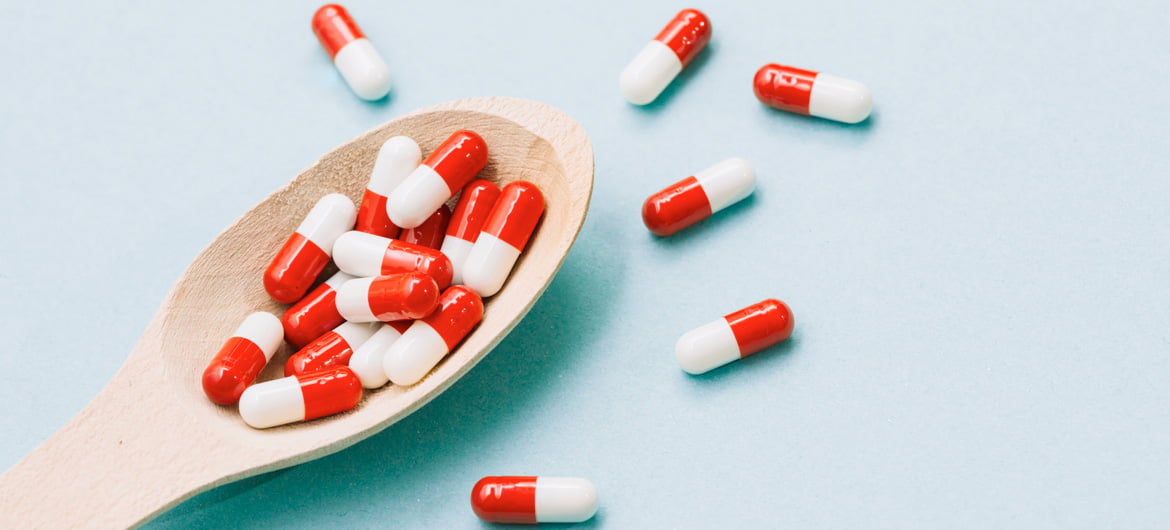Are the Super Tadarise Tablets what you are looking for?
Let’s take a deep dive into a topic that’s often whispered about but deserves much more attention to find the answer— sexual dysfunction in men. Did you know that, according to the World Health Organization (WHO), around 15% of men face this issue yearly? Both ED and PE are common conditions; about 30-60% of patients with ED also tend to experience PE. According to the World Health Organization (WHO), by 2025, that number is expected to climb to a staggering 320 million people worldwide.
However, there is hope in the form of Super Tadarise tablets, which combine Tadalafil 20 mg and Dapoxetine 60 mg in one ED pill. This article will explore the uses, benefits, dosage, and potential side effects of Super Tadarise Tablets and related topics like Tadalafil, Dapoxetine, Premature Ejaculation, and Erectile Dysfunction.
Sexual Dysfunction in Men
Sexual dysfunction in men is a complex issue that refers to difficulties engaging in sexual intercourse. Erectile dysfunction (ED) and premature ejaculation (PE) are the most common sexual dysfunctions in men.
Erectile Dysfunction (ED)
ED is when a man struggles to get or maintain an erection during sexual activity. This condition often arises from inadequate blood flow to the penis, interfering with the ability to achieve an erection.
Symptoms of ED
- Reduced sexual drive
- Soft erections
- Trouble getting an erection
- Trouble maintaining an erection
- Anxiety
Causes of ED
ED arises for lots of reasons, such as,
Psychological causes
- Stress
- Performance Anxiety
- Depression
- Guilt
- Low self-esteem
- Relationship problems
- Fear of sexual failure
Physiological causes
- Type 2 diabetes
- Obesity
- Heart and vascular disease
- Atherosclerosis
- High blood pressure
- Chronic kidney disease
- Multiple sclerosis
- Peyronie’s disease
- Treatments for prostate cancer, such as radiation therapy and prostate surgery
- Sleep disorders
- Metabolic syndrome
- Parkinson’s disease
- Low testosterone
Due to some medications
- Diuretics, including spironolactone (Aldactone),
- Thiazides (Diuril, Naturetin, and others)
- Centrally acting agents, such as methyldopa and reserpine
- ɑ-Adrenergic blockers, such as prazosin
- 𝛃-adrenergic (beta) blockers, including propranolol
- Blood pressure medicines
- Chemotherapy medicines
- Hormonal medicines, such as antiandrogens
- Tranquilizers or prescribed sedatives
- Appetite suppressants
- Anti-ulcer medicines
- Recreational drugs, such as Alcohol, Cocaine, barbiturates
Premature Ejaculation (PE)
PE happens when a man ejaculates sooner than desired, either before penetration or shortly after penetration.
Symptoms of PE
- Rapid ejaculation within 1-3 minutes after penetration.
- Difficulty in delaying ejaculation during almost every sexual encounter.
- Feeling distressed and frustrated leads to avoiding sexual intimacy with the partner.
Causes of PE
There are several factors responsible for PE, such as
Physiological factors
- Hypersensitivity
- Abnormal hormone levels
- Irregular brain chemical level
- Genetics problems
- Thyroid problems
- Neurological conditions
- Prostate issues
- Erectile Dysfunction
- Diabetes
- High Blood Pressure
- Infections/ Inflammation
Psychological Factors
- Stress
- Anxiety
- Performance anxiety
- Past traumatic experiences
- Sexual guilt
- Depression
- Body image issues
- Unrealistic expectations about sex
- Repressed or bottled-up sexual feelings
- Relationship issues
Due to some medications
- Medicines used for the treatment of Parkinson’s disease, such as Cabergoline
- Recreational drugs, like cocaine, amphetamine, etc.
While ED and PE are different conditions, they can coexist and sometimes intensify each other. Research indicates a notable overlap between the two, with a significant percentage of individuals experiencing both ED and PE simultaneously. This dual challenge can create complex issues surrounding intimacy, relationships, and self-esteem for those affected.

What Makes Super Tadarise Tablets Stand Out?
Now, let’s address the million-dollar question: Can Super Tadarise tablets truly help you stay hard even if you have ED? The short answer is – yes, indeed!
Super Tadarise isn’t just another ED pill—it’s a game-changer for those battling with both ED and premature ejaculation. The key ingredients in this tablet are Tadalafil and Dapoxetine.
Tadalafil belongs to a class of drugs called phosphodiesterase type 5 (PDE5) inhibitors, which aids in achieving and sustaining an erection. Meanwhile, dapoxetine is renowned for combating premature.
| Did You Know? 💡
At low doses, tadalafil is also effective for treating benign prostatic hyperplasia (BPH) and lowering blood pressure. |
How does Dapoxetine Work?
Simultaneously, Dapoxetine, the other crucial element in Super Tadarise, operates by altering the ejaculation process. Dapoxetine, categorized as a selective serotonin reuptake inhibitor (SSRI), influences the neurotransmitter serotonin within the brain.
- It works by inhibiting the reuptake of serotonin.
- Inhibiting serotonin reuptake increases its availability in the body.
- Increased serotonin levels can help delay ejaculation.
The next question that arises in mind is: how long does dapoxetine last? So, although it occasionally keeps its effects for up to 12 hours, it is most effective 1-3 hours after taking it. Therefore, by offering increased control over the timing of climax, Dapoxetine adds a crucial dimension to Super Tadarise, improving overall sexual experiences for men dealing with Premature Ejaculation.
| Did You Know? 💡
Dapoxetine, used for premature ejaculation, has a super-fast half-life! It’s absorbed and exits your system quickly, making it work fast. That’s why it’s taken as needed – perfect for on-the-spot use. |
Therefore, Tadalafil’s ability to enhance penile blood flow for sustained erections and Dapoxetine’s influence on ejaculation control combine in Super Tadarise, offering a complete solution to the challenges of both ED and PE.
Who Can Benefit From Super Tadarise Tablets?
Men with Erectile Dysfunction (ED)e ejaculation.
Point to note: Even though Tadarise Tablets can be a great option for addressing erectile dysfunction and premature ejaculation. However, this medicine should only be taken after a doctor’s prescription. This will ensure the effectiveness of the medicine and that it is safe for your use.
But How Does It Work?
When you take a Super Tadarise tablet, the Tadalafil and dapoxetine work separately but in complementary ways to treat ED and PE.
How Does Tadalafil Work?
The tadalafil component in Super Tadarise works by increasing the blood flow to the genital/ penile region (penis) through muscle relaxation of the blood vessels present over there. So, basically,
- In the corpora cavernosa of the penis, nerve, and endothelial cells release nitric oxide (NO).
- The phosphodiesterase type 5 (PDE5) enzyme is used to normally break down cAMP and cGMP.
- When phosphodiesterase is stopped from working (inhibited), cAMP and cGMP levels go up.
- Higher levels of cAMP and cGMP cause a decrease in calcium levels.
- Lower calcium levels result in blood vessel widening (vasodilation) and relaxation of smooth muscles in the penis.
- This leads to increased blood flow and relaxation of muscles in the penis.
Since its maximum doses for ED typically come in 20mg tablets (the dose that is also present in Super Tadarise pills), Tadalafil benefits by staying in the system for a prolonged period. Its action begins within 30 minutes to an hour post-ingestion, with effects lasting up to 36 hours. This extended window allows for a more natural and convenient sexual experience.
Men experiencing difficulty in achieving or maintaining an erection can benefit from Super Tadarise Tablets. These tablets contain Tadalafil, which enhances blood flow to the penis, helping to achieve and sustain an erection.
Men with Premature Ejaculation (PE)
For men who finish too quickly during sex, Super Tadarise Tablets are a good option. It includes Dapoxetine, which helps one last longer by delaying ejaculation. This way, one can enjoy a longer and more satisfying sexual experience.
Men Seeking Suitable and Combined Treatment
For those needing treatment for both ED and PE, Super Tadarise provides a convenient single-tablet Premature Ejaculation & Erectile Dysfunction Solution, eliminating the need to take multiple medications.
Couples Seeking Improved Sexual Experience
By managing both erectile dysfunction and premature ejaculation, Super Tadarise Tablets can enhance overall sexual satisfaction for both partners, contributing to a healthier and more fulfilling sexual relationship.
Men Looking for Long-Lasting Effects
Super Tadarise offers prolonged effects, with Tadalafil providing up to 36 hours of efficacy. This longer duration can offer greater spontaneity and reduce the need to time the medication closely to sexual activity.
Super Tadarise Tablets: Effects & Side Effects?
Every coin has two sides—Super Tadarise is no exception. While it is effective for many, it may cause side effects in some individuals.
Side Effects
- Blurred Vision/ Blue tinge in vision
- Chest Pain, Discomfort, Tightness, /Heaviness
- Vomiting
- Dizziness
- Unusual Tiredness /Weakness
- Headache
- Hearing Loss
- Nausea
- Slow /Fast Heartbeat
- Prolonged Erection
- Spontaneous Penile Erection
- Diarrhea
- Insomnia
Certain Drugs can also interact with Super Tadarise Tablets
- Anti-hypertensive (amlodipine, lisinopril, losartan, metoprolol, riociguat)
- Alpha-blockers (tamsulosin)
- Anti-anginal (nitroglycerin)
- Anti-fungal (ketoconazole, itraconazole)
- Antibiotics (erythromycin, clarithromycin)
- Anti-TB (rifampicin)
- Anticonvulsants (phenobarbital, phenytoin, and carbamazepine)
- Anti-HIV (ritonavir, saquinavir, and nelfinavir)
- Pain-killers (tramadol)
- Anti-depressants (lithium, nefazodone)
- MAO inhibitors (Isocarboxazid, Phenelzine, Selegiline, and Tranylcypromine)
Myths vs Facts: Super Tadarise Tablets, ED, PE & more
Myth: Erectile dysfunction is a normal part of aging.
Fact: ED isn’t age-specific, and it’s not an inevitable aspect of getting older. Aging doesn’t directly cause ED, and many older men remain sexually active well into their later years. ED can affect younger men due to various reasons like stress, anxiety, or underlying health conditions.
Myth: Pills for ED lead to uncontrolled erections.
Fact: Pills for ED, such as Super Tadarise Tablets, assist in achieving erections only in the presence of arousal. They typically enhance erections, boosting confidence without causing spontaneous or uncontrollable reactions.
Myth: Having PE means you lack control over your body.
Fact: PE doesn’t reflect a lack of control or weakness. It’s a common issue that many men experience and can be managed with various treatments and techniques.
Myth: Only diabetes and prostate issues cause ED.
Fact: While diabetes and prostate problems increase the risk, other factors like smoking, excessive alcohol, medications, and psychological factors can also lead to ED.
Myth: Waking up with an erection means you don’t have an ED.
Fact: Having morning erections doesn’t necessarily rule out ED. Lack of morning erections could point to physical causes, while having them may indicate stress-related or psychological factors contributing to ED.
Myth: ED is solely a sexual issue without health implications.
Fact: ED might be a sign of underlying health concerns like cardiovascular issues or diabetes. Seeking medical advice is crucial to ruling out serious conditions.
Myth: Erectile Dysfunction Treatment is a recent development.
Fact: Treatment for ED dates back centuries. Modern approaches include medications (such as Sildenafil, Tadalafil, etc.), pumps, and even surgical implants, offering diverse options to address ED effectively.
Conclusion
In conclusion, Super Tadarise Tablets, powered by Tadalafil 20mg and Dapoxetine 60mg, emerge as a hope for people with ED. While these tablets offer optimism, a complete strategy involving lifestyle changes and emotional support fortifies the path to overcoming ED.
Remember, having sexual dysfunction isn’t a dead end; it’s a hurdle. Accept the advancements in medical science, integrate them with holistic methods, and experience a life full of energy and fulfillment. It’s time to reclaim your intimate moments!
Disclaimer: This blog is for informational purposes only and should not be considered medical advice. Always consult a healthcare professional before starting any treatment. The content is not intended to diagnose, treat, cure, or prevent any condition. Purchase medications only from reputable sources to ensure safety and authenticity.
🙋♂️Questions to Ask Your Doctor 🙋♂️
|



